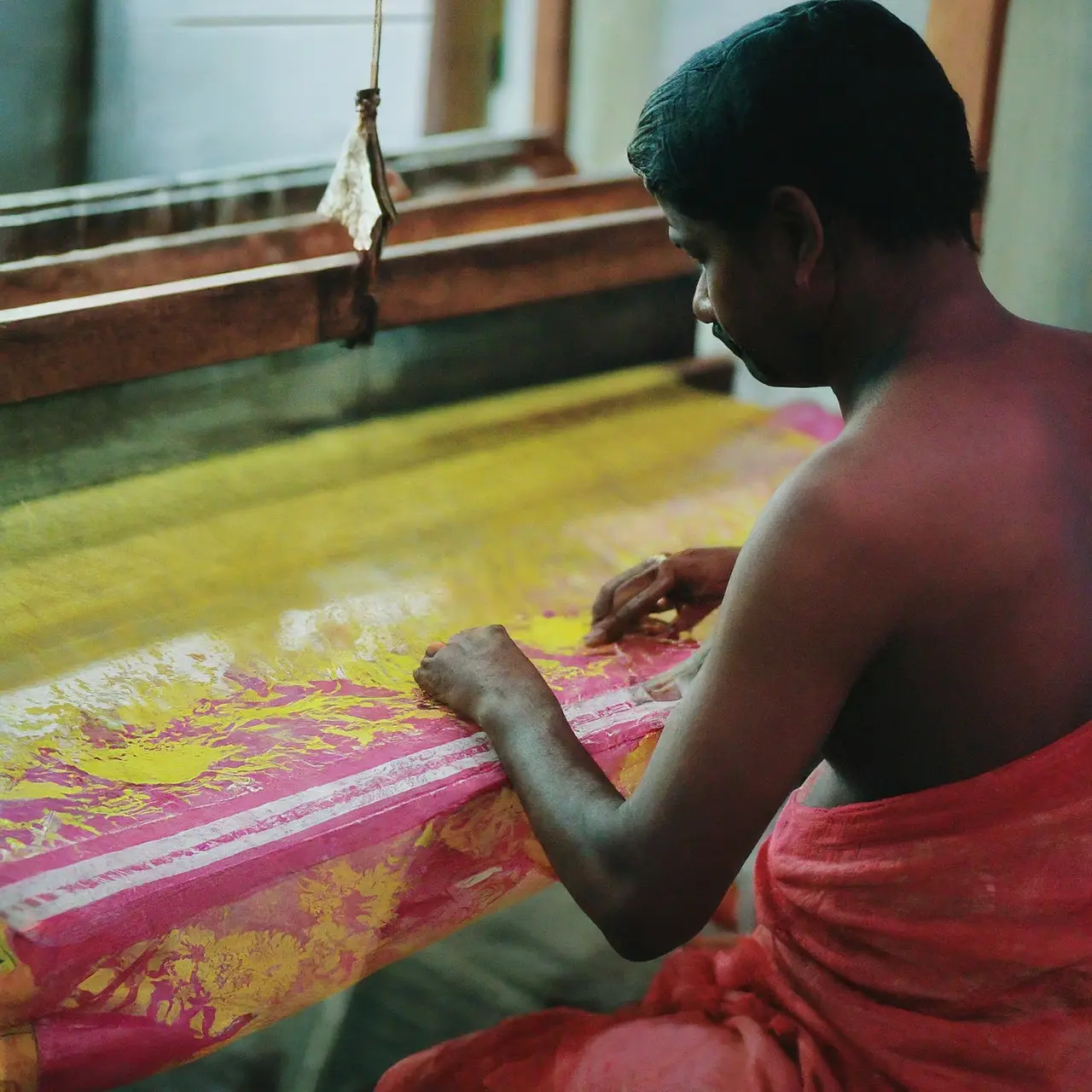How Are Jamdani Sarees Traditionally Made?
Explore the intricate process behind creating Jamdani sarees, a traditional craft that combines history, skill, and artistry. This guide will walk you through each step of this fascinating journey.
The History and Significance of Jamdani Sarees
The art of creating Jamdani sarees is an age-old tradition that dates back to the Mughal era, representing a rich tapestry of cultural heritage. These sarees are not just garments; they are pieces of art, admired for their intricate designs and the skill involved in their creation.
Historically, the craft of Jamdani weaving was practiced in the Bengal region, covering parts of present-day Bangladesh and the Indian state of West Bengal. The term ‘Jamdani’ is believed to be of Persian origin, with ‘Jam’ meaning flower and ‘Dani’ meaning vase, indicative of the floral patterns that prominently adorn these sarees.
Understanding the Materials Used
The primary material used in Jamdani sarees is cotton, specifically a high-quality, fine-threaded cotton that allows for the detailed work that these sarees are renowned for. The raw materials’ quality plays a crucial role in determining the saree’s final look and feel.
Silk threads are sometimes incorporated into the weave to add a shimmering effect to the floral and geometric motifs, providing a subtle contrast against the cotton fabric. This blend of materials not only enhances the saree’s beauty but also its durability.
Preparing the Loom for Weaving
Before the weaving begins, the loom must be carefully prepared, a process that could take up to several hours. The preparation involves loading the loom with the warp—the vertical threads that form the saree’s base. It’s a testament to the weavers’ patience and precision.
The warp threads are meticulously aligned, ensuring they are tensioned evenly across the loom. This initial step is critical, as any discrepancies in the tension can lead to imperfections in the weaving, demonstrating the weavers’ remarkable attention to detail.
The Weaving Process
Jamdani weaving is a time-consuming and labor-intensive process that requires exceptional skill and concentration. The weaver intertwines the weft threads with the warp to create the saree’s base fabric, incorporating the intricate Jamdani motifs manually, using a supplementary weft technique.
Unlike other weaving techniques, Jamdani motifs are added without the aid of a sketch or pattern to follow, relying solely on the weavers’ memory and imagination. This method allows for each saree to be unique, with slight variations that add to its charm and value.
Adding the Motifs and Designs
The creation of motifs in Jamdani sarees is where the real magic happens. Weavers use a thin needle to carefully insert supplementary weft threads, creating various motifs and designs. From delicate florals to geometric patterns, each motif is crafted with precision.
This addition of motifs while weaving the saree requires a synchronized effort between multiple weavers, showcasing their teamwork and the depth of their craft. The designs are not merely added; they are woven into the very fabric of the saree, becoming part of its essence.
The Role of the Master Weaver
The master weaver plays a pivotal role in the creation of a Jamdani saree, overseeing the entire process to ensure that each saree meets the high standards of quality and design. This includes selecting the materials, preparing the loom, and guiding the weavers through the intricate weaving process.
The master weaver’s experience and skill are indispensable, often passed down through generations, preserving the tradition and ensuring the continuity of this ancient craft. Their expertise ensures that each Jamdani saree is a masterpiece, worthy of the time and effort invested in its creation.
Final Touches and Quality Control
After the weaving is complete, the saree undergoes a series of finishing touches. This includes washing, starching, and ironing, processes that not only clean the saree but also give it a crisp, elegant finish. It’s these final steps that bring out the beauty of the Jamdani saree, preparing it to be worn or sold.
Quality control is a critical phase where each saree is meticulously inspected for any defects or inconsistencies. Given the handmade nature of Jamdani sarees, this step ensures that each piece maintains a level of perfection, embodying the craftsmanship of the weavers.
The Cultural Heritage of Jamdani Weaving
Jamdani weaving is more than just a textile craft; it’s a cultural heritage that embodies the history, traditions, and artistry of the Bengal region. Recognized by UNESCO as an Intangible Cultural Heritage of Humanity, the Jamdani technique represents a living history, connecting the past with the present.
The preservation of Jamdani weaving is crucial for maintaining this link to cultural identity, supporting the artisans who continue to practice this intricate craft. As consumers and admirers of Jamdani sarees, it’s our responsibility to appreciate and safeguard this remarkable art form.
The Art of Crafting Jamdani Sarees: A Conclusion
Creating Jamdani sarees is more than just a process; it’s the preservation of tradition, the exhibition of unparalleled skill, and a testament to the artisans’ dedication. As you drape a Jamdani saree, remember the meticulous effort and ancient practices that have contributed to its beauty.






